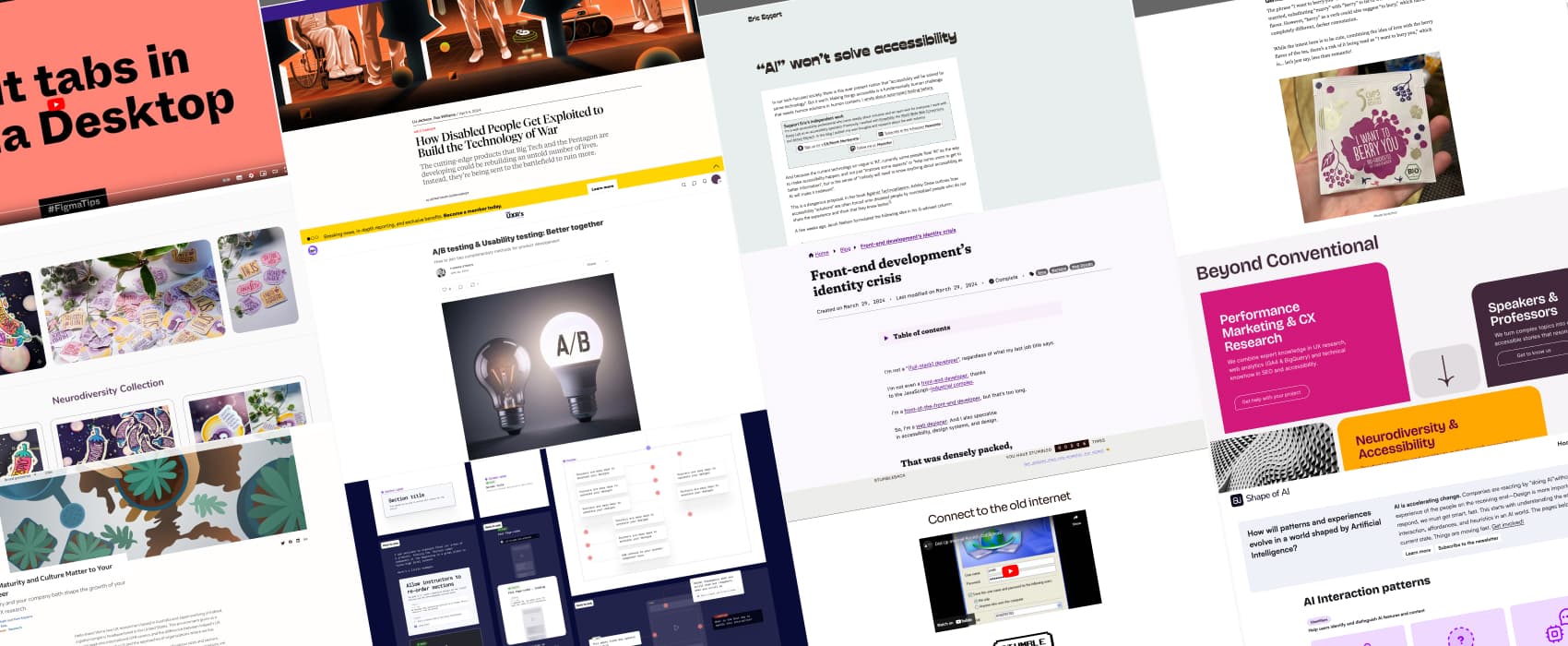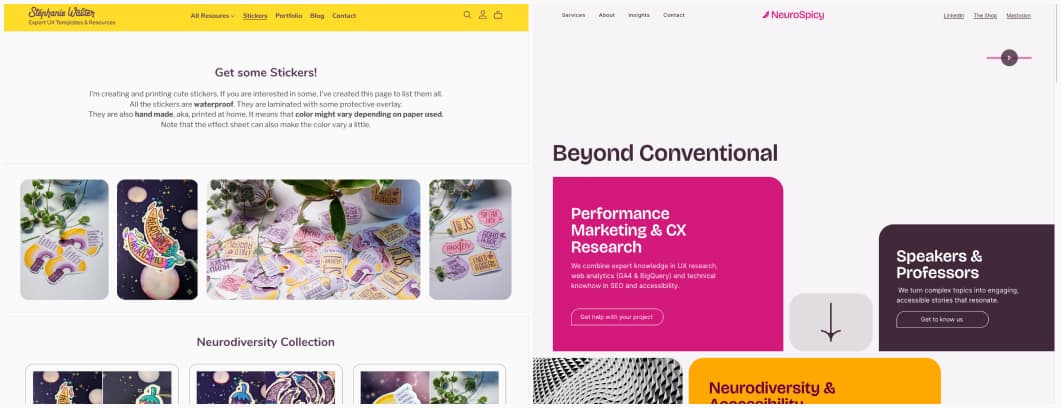
Pixels of the Week – May 5, 2024
Neurospicy stickers, Figma handoff helpers and UX maturity
My curated weekly-ish online newsletter, where I share interesting articles, tools, and resources I found during the week. You can expect content about UX, design, user research, accessibility & tech, but also some processes, some inspiration, sometimes books, and a couple of videos and podcasts. Also, don’t forget to, subscribe to the newsletter to get notified, you will get the weekly links directly in your mailbox, and be notified when I publish other articles.
Now: what I’m currently up to
I’m happy to announce that Myrima Jessier I launched Neurospicy. It’s an agency, a boutique consultancy and a project dedicated to neurodiversity – all rolled up into one. It’s an MVP. The idea is to have a place to offer different content around neurodiversity, including training, socks, and stickers. I have no idea where this is going, and honestly, this is the most fun part, dopamine rush?
I’ve officially launched my sticker shop. You can order directly from the same shop I use for the UX templates, but in a sticker section.
Most popular content this week
This week’s Figma community file you want to bookmark, trust me: Handoff Helpers 2.0, a free component library to help designers communicate more effectively in Figma
Interesting articles that caught my attention
- Why UX Maturity and Culture Matter to Your UXR Career (6min) UX maturity models rarely take country and culture into account. Yet, countries with a strong history of hardware development or specific labor regulations may find it challenging to adopt agile methodologies, impacting their UX maturity. Language might also play a role. Countries where English is not the primary language, potentially experiencing lower UX maturity due to limited access to information and resources in other languages.
- How Disabled People Get Exploited to Build the Technology of War (35min) long and super insightful read by Liz Jackson and Rua Williams on how assistive technologies developed for disabled individuals are repurposed for military use, often without their consent or knowledge. Under the cover of inclusive design methodologies, disabled people get exploited in the development of technologies like prosthetics and speech recognition, which ultimately serve militaristic agendas.
- A/B testing & Usability testing: Better together (6min): while A/B testing is good for numbers, it doesn’t explain why users do what they do. Thomas Stokes proposes that you run usability test, together with A/B testing, to triangulate and get better insights on user behavior. He proposes a project timeline where can even run both in parallel for different research phases.
- 5 times “smart” copy swung into graveyard humor (6min) from “collapse” buttons not really fit for a mental health app, to German tea who want to berry you, all the way in some PastAway italian restaurants.
- Front-end development’s identity crisis (8min) that article resonated a lot with me, especially the “I’m not even a front-end developer, thanks to the JavaScript–industrial complex”. This is why I went full time designer instead. I’m all in favor of bringing the “web designer” job title back, for people who craft semantic HTML, create CSS code, use JS for DOM manipulations but also make sure it works across browsers, optimize performance and are interested in accessibility.
- “AI” won’t solve accessibility (9min) In our tech-focused society, there is this ever present notion that “accessibility will be solved by some technology”. But it won’t. Making things accessible is a fundamentally human challenge that needs human solutions in human context.
Curiosity cabinet: non-design/tech rabbit holes I enjoyed
How did triangles shrink France? how Cassini family created the first accurate map of France, using triangles
Inspiration: fun experiments, beautiful art, and great ideas
StumbleBack Nostalgic from the old days? Stumble back into Ye Olde Internet!
Useful tools & resources
- CSS Shape: Pure CSS shapes made with a single-element, modern CSS and an optimized code
- The Shape of AI a place to find AI interaction patterns to help you build AI tools and products while prioritizing the experience of the people using those. Each pattern comes with an overview, benefits, anti-patterns and examples.
- Udio I had some fun with total random wacky prompts for this prompt to music generator. It’s uncanny when it tried to mimic voice, but, we all enjoyed the Ketchup song, so, why not. Here we go, enjoy my Amsterdam Serenade
Tutorials
Figma Tip: Split tabs in Figma Desktop this reminds me of Illustrator / Photoshop and it’s a very useful feature
